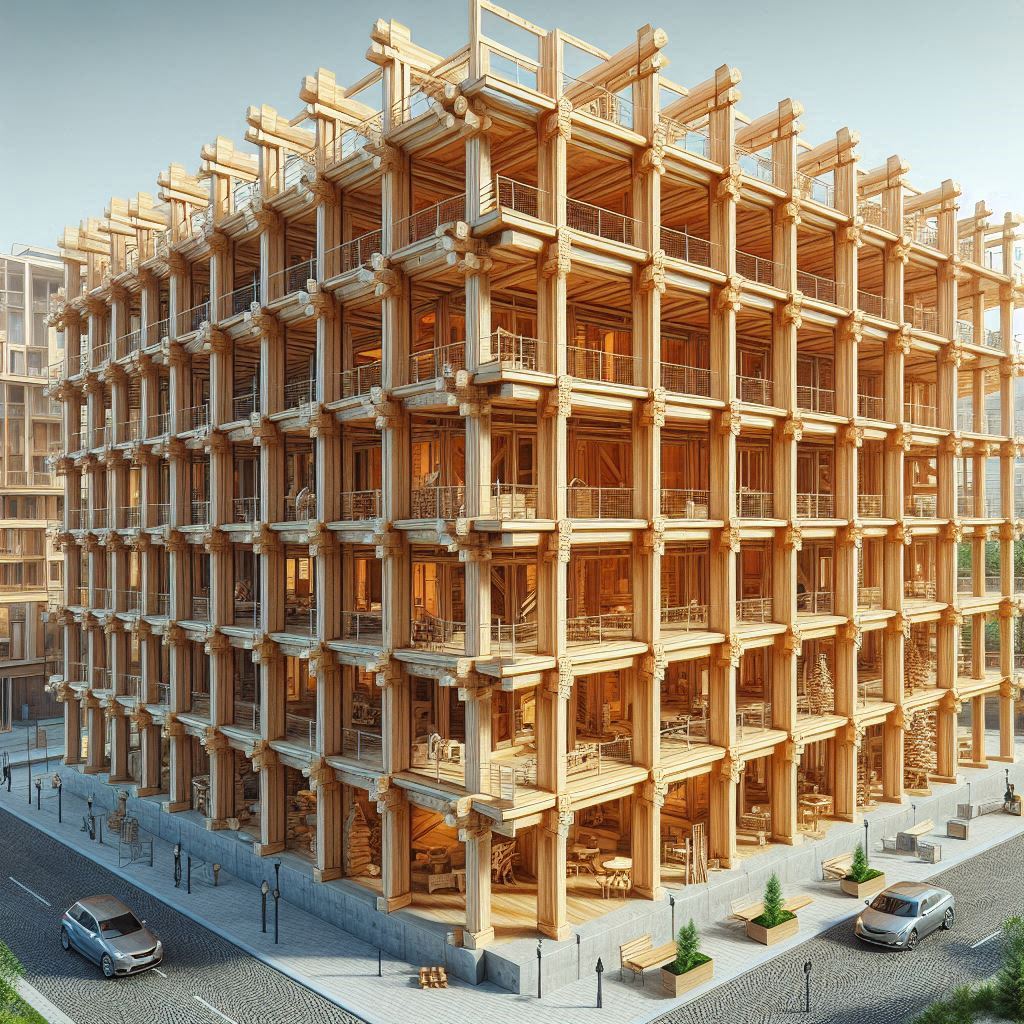Metropolitan centers are often likened to jungles of concrete, as the towering structures that define cities from New York to Vancouver are predominantly constructed from concrete. However, a shift is on the horizon with a growing movement to erect taller buildings using mass timber.
Mass timber refers to a group of building materials created by fusing multiple wood layers to form larger and more robust components such as panels and beams. Advocates argue that mass timber offers a quicker, simpler alternative to traditional concrete and steel, with the added benefit of being more environmentally friendly.
In the realm of high-rise construction, where concrete and steel have long been the dominant materials, mass timber has been a lesser-known option. A report by RBC in 2022 indicated that mass timber constituted a mere one percent of North America’s construction materials.
Nonetheless, market analysts anticipate a significant growth in the mass timber sector. Across the nation, existing mass timber facilities are undergoing expansion, and new ones are being established, ranging from British Columbia and Alberta to Ontario and Nova Scotia. Frank Gannon, a director at mass timber manufacturing company Western Archrib, expressed the soaring demand for mass timber, noting the company’s expansion with a new facility to accommodate the increasing orders.
The mass timber industry is receiving an impetus from updated building codes permitting taller structures made of mass timber, alongside federal and provincial initiatives that promote its usage.
Despite this, the adoption of mass timber has been inconsistent, with some constructors hesitant to transition from conventional materials to this newer alternative. Moreover, there’s a debate among experts regarding the actual environmental benefits of mass timber.
The primary forms of mass timber are glue-laminated timber (glulam) and cross-laminated timber (CLT), which are integral in constructing beams, columns, floors, and walls.
With Canada’s goal to accelerate housing construction, mass timber is poised to become a significant player in the construction material mix, particularly in Northern regions where concrete is costly and challenging to transport. Mass timber’s capacity for rapid development of housing projects is seen as a valuable addition to the construction industry’s toolkit.
Rick Jeffery, the CEO of the Canadian Wood Council, believes that while mass timber won’t entirely replace concrete and steel, it will likely be used in conjunction with these materials.
Despite the potential benefits, not all are convinced about switching to mass timber. In provinces like British Columbia and Quebec, construction has increased due to pro-wood policies, but other regions, including Alberta, are approaching mass timber with caution, as noted by Scott Fash, CEO of BILD Alberta. Builders are meticulously evaluating mass timber but have yet to fully endorse it for residential projects.
Source: CBC News


























